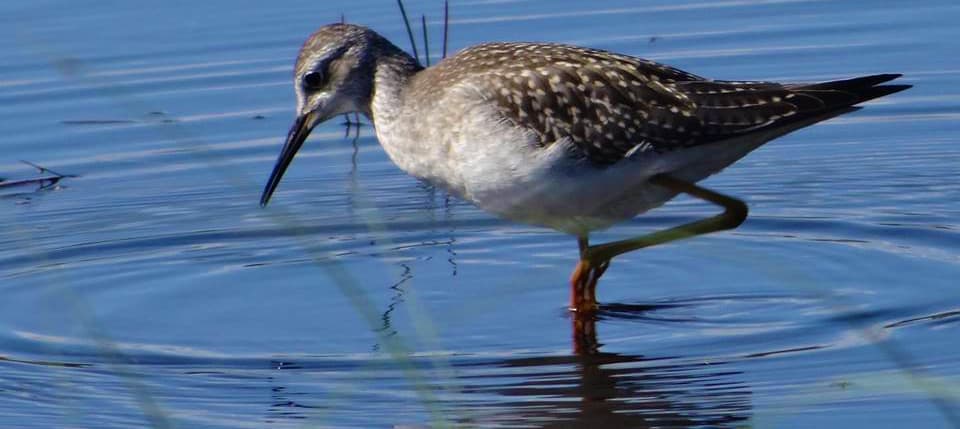Share this article
JWM: Shorebirds take advantage of Alaska military lands
It’s natural for researchers to focus on the coast when studying shorebirds, but when Ellen Martin was studying them in Alaska as a master’s student at Colorado State University, she focused her attention inland. Anecdotal evidence and reports detected during other wildlife surveys suggested the birds appeared in the interior of the state, but no one knew much about which species and, importantly, how many individuals there were.
“I was thinking back to an Alaska Shorebird Group meeting and seeing the map of Alaska on PowerPoint screens and talks and looking at where studies were happening,” said Martin, who is now a PhD student at the Norwegian University of Science and Technology. They saw only one other study occurring in the interior boreal forest, and only on one species of shorebird.
In a study published in the Journal of Wildlife Management, Martin and her colleagues looked at shorebird abundance on rocky ridges and wetland valleys on military lands to help fill the information gap. But those areas were not easy to get to. “There are very few roads in the interior, particularly on military training lands where our study was conducted,” she said.
To conduct their surveys, Martin and her colleagues had to determine how to access certain plots and when they would be reachable, sometimes flying helicopters over glacier-carved valleys or paddling inflatable canoes. Over the course of the summer, each research technician walked some 120 miles, looking and listening for birds in dense spruce forest, lichen-covered tundra and flooded tussock tundra.
They estimated about 45,000 individual shorebirds were using military lands in Alaska’s interior, including seven species of conservation concern: whimbrels (Numenius phaeopus), lesser yellowlegs (Tringa flavipes), solitary sandpipers (Tringa solitaria), dunlins (Calidris alpina), upland sandpipers (Bartramia longicauda), American golden plovers (Pluvialis dominica) and surfbirds (Calidris virgata).
“The military lands are very big, so when you break it down to average density, how many birds per square kilometer, they are not dense at all,” Martin said. On most plots, no more than one or two individuals were detected, she said, but the military lands may be representative of the entire boreal forest, suggesting that small densities of shorebirds may occur throughout much of the interior.
The team also collected habitat data on every plot they surveyed, whether shorebirds were present or not. “Where the birds aren’t is just as important as where they are,” Martin said. More lowland shorebirds appeared at lower elevations in places with less scrub forest canopy and more water. Upland shorebirds appeared at high elevations farther from wetlands, they found.
The team created habitat maps for their entire study site that depict important breeding areas for species of conservation concern during May, June and July. “The U.S. military is historically a good conservation partner,” she said.
They also plan to continue studying habitat associations more in depth, outside of military lands. “I think the next step is to encourage or collaborate with other interior landowners to conduct similar surveys to validate or learn more about these abundances,” she said.
This article features research that was published in a TWS peer-reviewed journal. Individual online access to all TWS journal articles is a benefit of membership. Join TWS now to read the latest in wildlife research.
Header Image: Lesser yellow legs are a species of conservation concern found in interior Alaska. Credit: Ellen Martin








